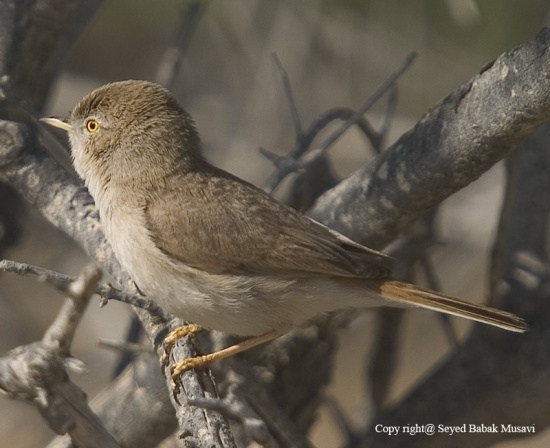- Curruca nana
Sylvia nana
Identification
- Greyish-sandy back and head
- Whitish underparts
- Yellow eye
Sexes identical
Distribution
South central temperate Asia. Caspian Sea to Mongolia and western China; winters to north-eastern Africa and India
Taxonomy
This is a monotypic species.[1]
Subspecies S. n. theresae is not recognised by all authorities[2]
Formerly considered conspecific with the African Desert Warbler.
Habitat
Open desert plateau, farmland and woods.
Behaviour
Diet
The diet includes insects but it will also take berries.
Breeding
Four to six eggs are laid in a nest which is placed in a low shrub.
References
- Clements, J. F., T. S. Schulenberg, M. J. Iliff, S. M. Billerman, T. A. Fredericks, J. A. Gerbracht, D. Lepage, B. L. Sullivan, and C. L. Wood. 2021. The eBird/Clements checklist of Birds of the World: v2021. Downloaded from https://www.birds.cornell.edu/clementschecklist/download/
- Avibase
- Wikipedia
- Avian Web
- BF Member observations
Recommended Citation
- BirdForum Opus contributors. (2024) Asian Desert Warbler. In: BirdForum, the forum for wild birds and birding. Retrieved 8 May 2024 from https://www.birdforum.net/opus/Asian_Desert_Warbler
External Links
Search by scientific name:
Search by common name:
GSearch checked for 2020 platform.




